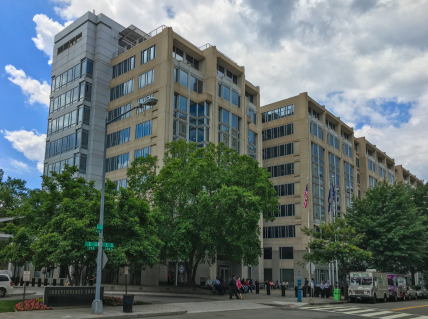I am reposting a blog I originally posted in 2017. With so much negative news these days, I thought it might be nice to shine a positive light on something. And I recently rewatched Hidden Figures.
Original post:
A fitting way to spend a cold afternoon on Martin Luther King Day, I went to see Hidden Figures. Based on the book by Margot Lee Shetterly, Hidden Figures: The American Dream and the Untold Story of the Black Women Mathematicians Who Helped Win the Space Race, this is the true story of the women who worked for NASA as mathematicians in the early 1940s.
These brilliant women played a role in our country’s greatest achievements in space at the time of the civil rights movement, making their story even more inspirational. Shetterly came to tell this story as her father was a scientist at Hampton’s Langley Research Center — the first field facility for the National Advisory Committee for Aeronautics (NACA) which later became NASA.
In a recent interview with PBS NewsHour, Shetterly told Nsikan Akpan, “I knew the women. Many of them worked with my dad, and I’d seen them growing up. But I didn’t know much about their particular stories — how they had come to work at NASA, or why there were black women working there.” (see full story here).

The women chronicled in the story are Dorothy Vaughan, Mary Jackson, and Katherine Johnson. These women worked through discrimination and applied their mathematical genius to advance the space program.


“Each would ultimately make major contributions to aeronautics. Vaughn mastered computer programming and helped the agency transition from human to IBM computers. Jackson became NASA’s first black female engineer and a leader in research on supersonic flight. And Johnson made the crucial calculations that guided the late John Glenn and America’s first manned missions into sub-orbit, orbit and beyond” (PBS.org).
Telling their story, and recognizing their contribution is so important to our understanding of race, discrimination, and achievement in modern America. Along the way, each of these women had teachers who saw their potential, suspended race and gender stereotypes and pushed them to break barriers to succeed. No matter what.
Good for Shetterly for telling their story.
Updated:
Since 2017, the women portrayed in the movie have received additional awards and recognition for their work at NASA. In 2017, Langley renamed a state-of-the-art computer research facility after Katherine Johnson who, at 99-years-old, was there to personally dedicate the facility that bears her name. Johnson was honored as a trailblazer and given the Presidential Medal of Freedom. In addition, Johnson was part of the group honored with the Congressional Gold Medal, and NASA’s Independent Verification and Validation facility in Fairmont, West Virginia, also bears her name (NASA.gov).
“NASA facilities across the country are named after people who dedicated their lives to push the frontiers of the aerospace industry. The nation is beginning to awaken to the greater need to honor the full diversity of people who helped pioneer our great nation. Over the years NASA has worked to honor the work of these Hidden Figures in various ways, including naming facilities, renaming streets and celebrating their legacy. We know there are many other people of color and diverse backgrounds who have contributed to our success, which is why we’re continuing the conversations started about a year ago with the agency’s Unity Campaign. NASA is dedicated to advancing diversity, and we will continue to take steps to do so.”
In 2019, President Trump signed the Hidden Figures Congressional Gold Medal Act that posthumously awarded the honor to Jackson, who passed away in 2005, and her “Hidden Figures” colleagues Katherine Johnson, Dorothy Vaughan, and Christine Darden (Congress.gov).

In 2019, after a bipartisan bill by Sens. Ted Cruz, Ed Markey, John Thune, and Bill Nelson made its way through Congress, the portion of E Street SW in front of NASA Headquarters was renamed Hidden Figures Way.
In June 2020, NASA Administrator Jim Bridenstine announced the agency’s headquarters building in Washington, D.C., would be named after Mary W. Jackson. Bridenstine said, “Today, we proudly announce the Mary W. Jackson NASA Headquarters building. It appropriately sits on ‘Hidden Figures Way,’ a reminder that Mary is one of many incredible and talented professionals in NASA’s history who contributed to this agency’s success. Hidden no more, we will continue to recognize the contributions of women, African Americans, and people of all backgrounds who have made NASA’s successful history of exploration possible” (NASA.gov).

Carolyn Lewis, Mary Jackson’s daughter said, “We are honored that NASA continues to celebrate the legacy of our mother and grandmother Mary W. Jackson. She was a scientist, humanitarian, wife, mother, and trailblazer who paved the way for thousands of others to succeed, not only at NASA, but throughout this nation” (NASA.gov).
These are my reflections for today.
7/17/20
Follow me on Facebook
William Frantz Public School: A Story of Race, Resistance, Resiliency, and Recovery in New Orleans, Connie Schaffer, Meg White, and Martha Graham Viator (August 2020 release) Peter Lang Publishing.

I just saw this movie Friday. Loved it! I was not aware of these women’s stories. Got some history and was thoroughly entertained as well!
LikeLike